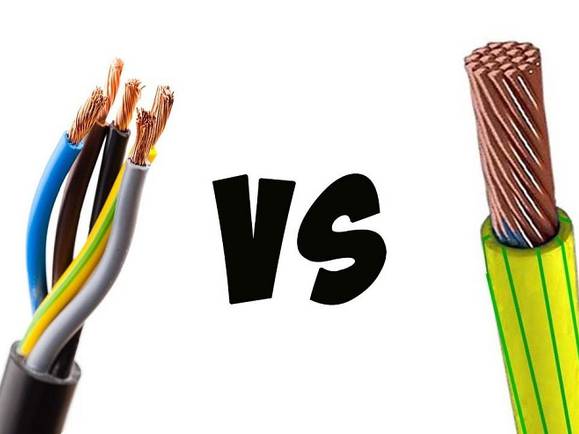
Often, people use the words "cable" and "wire" as synonyms, without thinking about the fact that these concepts are completely identical and their similarity is limited to appearance.
The Big Dictionary of Modern Russian Ushakov defines the wire as a metal wire that serves to transmit electrical energy. The cable is called a special type of electrical wire that is used for underground and underwater installations.
However, to accurately determine the difference between cable and wire, it is worth referring to the technical literature.
According to GOST 15845-80, which was adopted in the USSR and still remains relevant, the cable’s feature is the content of one or several insulated conductors in it. They are enclosed in a shell, over which there may be a protective cover, including armored. This shell can be plastic, rubber, metal or polyethylene (XPS). It is necessary in order to protect the wires from moisture, light, various chemicals and other external influences and mechanical damage. This leads to the possibility of laying the cable in the ground and deep under water.
The peculiarity of the wire is that it can consist of one or several twisted non-insulated (bare) wires or insulated conductors. On top of them can only be a non-metallic sheath (cross-linked polyethylene, PVC insulation, etc.), braid or winding of fibrous materials or wire. The wire is not designed for laying in the ground and under water.
Bare wires are used mainly for laying overhead power lines. Insulated wires are unprotected (have only insulation) and protected from external influences by means of a shell over electrical insulation.
Differ cables and wires and applications. So, there are cables of low flammability or fire-safe, non-flammable, with low gas and smoke emission. Cables are used for installation of communications, as ship, optical, geophysical, coaxial, radio frequency and others.
Wires are used for overhead transmission lines, electrical installations and rolling stock, as well as winding, lighting, installation and others.
Findings:
The cable is always made in the shell, and the wire is bare.
Cables are so protected that they are suitable for laying underground and under water, while the wires do not have serious protection from damage and environmental exposure.
Cables and wires have a different purpose.
